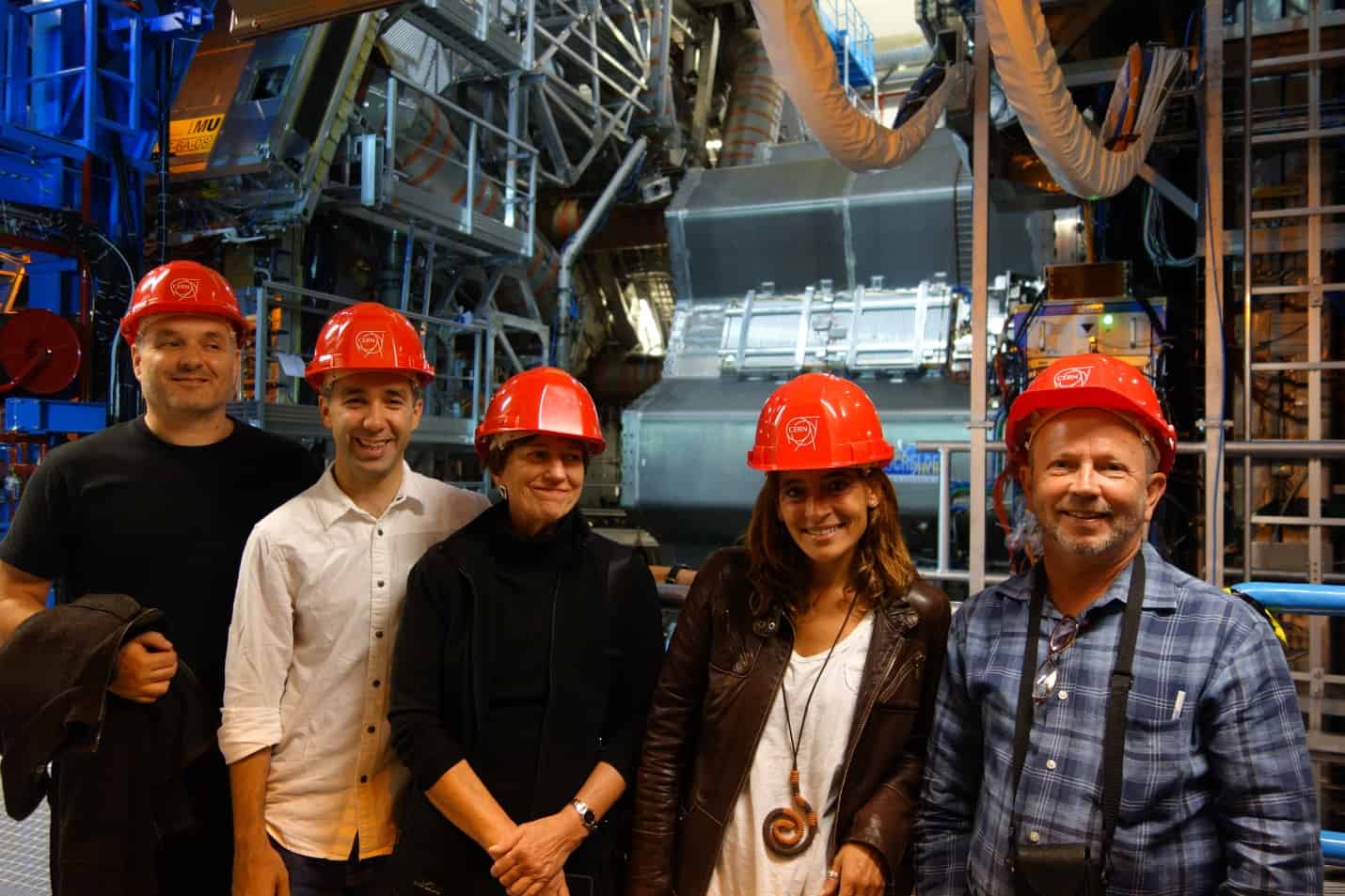
By Robert P Crease in CERN, Geneva
On Tuesday morning I addressed 1300 empty chairs.
I was the first of several presenters yesterday at a dress rehearsal for the TEDxCERN event, which takes place this afternoon, Wednesday 24 September. The rehearsal was held in a huge tent specially constructed for this event, and for CERN’s 60th-anniversary celebrations next week. The programme will be broadcast live today starting at 1.30 p.m. CEST (GMT+2).
It isn’t easy, I discovered, to grab the attention of empty chairs. I stumbled over sentences and forgot to click my slides. Occasionally I felt on automatic pilot, and had the eerie experience of hearing myself speak with a half-second delay, as if I were listening to myself from the back of my head. I went a minute over time and also discovered a typo in a slide that I had viewed approximately a zillion times before. I was relieved to find I wasn’t the only one; some of those who followed, too, tripped over delivery or had trouble with slides.
Fortunately, we were given additional coaching by professional trainers Michael Weitz and Eyal Nagar. Nagar put me through several physical exercises well known to actors, and had me practise eye contact. Weitz gave me tips on what to do once I actually made eye contact. He warned, for instance, not to take too much comfort from “strong sheep” – or people who smile, nod and appear to be listening. But he also said not to be too concerned about people who sit back, fold their arms and glare sternly at you. “Sometimes,” he said, “that’s what scientists do when they really are listening!”
The event is sponsored by Rolex as well as CERN – kudos to a company that finds it worthwhile to invest in scientific events! It also has spectacular production values, those of a theatrical performance rather than a lecture hall. The stage is dramatically lit by an array of overhead stage lighting that alters the mood of the room by varying the colours. A large and brightly lit TEDxCERN logo has been fashioned of acrylic back-lit letters. A 5.5 × 28 m screen runs the full length of the stage, and accommodates slides, videos and images of the speaker taken by a fully-extended crane camera.
I’ll be among those participating in pre-recorded behind-the-scenes interviews to be shown during the breaks.
Throngs of visitors are already showing up to events held in advance of the lab’s 60th birthday celebrations. I spent an hour in the CERN cafeteria with Mark Levinson, whose movie Particle Fever was shown here a few days ago; Levinson – who has a PhD in physics – told me colourful stories about what it was like to film at CERN on and off over a period of about five years.
Together with a handful of other speakers, I was also given a tour of the ATLAS experiment, whose access hall leads via a shaft 100 m underground to the second-biggest artificial cavern in the world (the biggest is in China). We could visit because the machine isn’t running and the detector is undergoing maintenance, but the hall will soon be closed to tourists for three years. “I’ve been down to see ATLAS on maybe 1500 occasions,” one physicist serving as a guide told me, “but it gives me chills each time.”
I got a tour of the Synchrocyclotron, CERN’s first accelerator, which was completed in 1957 and stopped working in 1990. The device fills an entire room. It consists of a huge rectangular 2 T magnet, which surrounds a large vacuum chamber inside of which are the two “D”-shaped accelerating electrodes. I wondered who besides me might find the pile of antiquated equipment interesting. But CERN has a recently developed 17-minute presentation that seamlessly merges film with audiovisual technology, which illuminates the machine with multicoloured lighting in what is known as “projection mapping”, telling the story of the machine and how it works in a novel, informative and visually interesting way.
But I still have a dire problem: how to shave off a minute off my talk.



